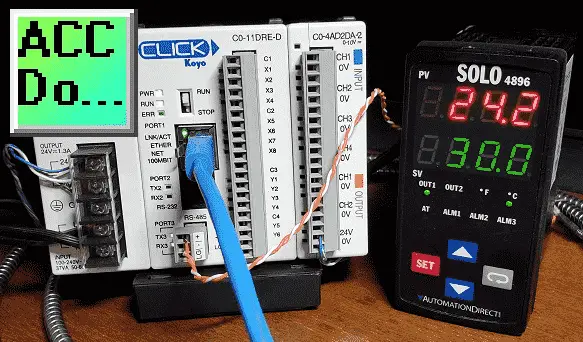

Use this formula to calculate the inter-packet delay (in microseconds) If the value entered is larger than the required time, the value Time instead of the value that is entered. Than the required time, the Modbus RTU Client will use the minimum required The Modbus specification requires this value to be a minimum of 3.5 characters "dead time" on the wire that Modbus uses to frame a packet. The inter-packet delay creates the required This can be any be anyĬonstant between 5. Remote Modbus RTU Server, this can be any constant from 0 to 255.ĭelay is the amount of time (in microseconds) that will be placedīetween the Modbus RTU packets as they are sent. Is the number of times the instruction should retry the communication with the

RTU Server to respond, this can be any constant from 0 to 32767. Timeout is the amount of time (in milliseconds) the instruction should wait for the remote Modbus If this option is selected the MRXĪnd MWX instructions can select as a target Device. Select this option to allow the on-board serial port to be used by the Modbus The Modbus/RTU Server (Slave) supports the following function codes: The size of the memory blocks available to the Modbus/RTU driver can be Protocol will only have access to the following blocks of memory (these Unit ID sets the Unit ID of the Modbus/RTU Server Device, this can be This Device responds to Modbus/RTU Client requests: Modbus Protocol Settings are the configuration settings used when The Modbus protocol-specific memory in the Do-more CPU. Select this option to have the serial port use Modbus protocol to allow a third-party device that communicates via Modbus/RTU protocol to read and write Of the memory blocks available to the K-Sequence driver can be changed in the With the K-Sequence protocol will only have access to the following blocks of memory Server Device, this can be any constant from 1 to 90. When this Device responds to K-Sequence Client requests: K-Sequence Protocol Settings : configuration settings used K-Sequence is a proprietary protocol used by Automationdirect (Koyo) hardware. Select this option to have the port use K-Sequence protocol to allow third-party devices that communicate via K-Sequence protocol to read and write the DirectLOGIC protocol-specific memory in the Do-more CPU. K-Sequence Server (Emulates DirectLOGIC PLCs) To use "Automationdirect Do-more Serial" protocol. Programming software, or when the port is used with an HMI such as a C-More panel, Point of View software, etc. This protocol is used when the port is used as a programming port for Do-more Designer Select this option to have the serial port use the Do-more native protocol. Protocol Do-more Protocol (For programming, HMIs, etc.) can be done when the operational mode is selected or they can be set at runtime with the Setup Serial Port (SETUPSER) instruction. Setting the port's parity, baud rate, slave ID, etc. The associated structure that are created to give your project runtime access to the serial port. The operational mode selection will determine the Device and Port can only operate in one of the following modes at any given time. The selections are mutually exclusive, meaning that the on-board serial The Serial Port Mode configuration selects the operational mode for the on-board serial port of Server Whitelist on Ethernet-equipped BRX CPUs, this will allow only the specified network devices access to various communication servers on the BRX PLC. Modbus/TCP Server Configuration will enable / disable the built-in Modbus/TCP Server's use of the on-board EthernetĮtherNet/IP Server / Adapter Configuration will enable / disable the built-in EtherNet/IP Explicit Message Server and the Implicit Adapter's use of the on-board EthernetĮnable Web Server on Ethernet-equipped BRX CPUs, this will enable both the on-board web server and the REST API that it uses. TimeSync allows Ethernet-equipped Do-more CPUs to automatically synchronize their internal clocks.ĭefault TLS TimeSlice sets the amount of time to allow each TLS encrypted connection to work on each PC scan. Internal Ethernet Port sets the TCP/IP Address and the Node ID, Name and Description, and an alternate UDP Port number for use with Port Forwarding. POM (Pluggable Option Module) Configuration sets the operational parameters for optional POM devices for BRX PLCs.ĭefault value of the Software Watchdog Timer. The operational mode of the on-board serial port. Necessary to configure the on-board hardware of a Do-more CPU. This page of the System Configuration dialog provides the selections Help File Version: 2.8.3.19 CPU Configuration


 0 kommentar(er)
0 kommentar(er)
